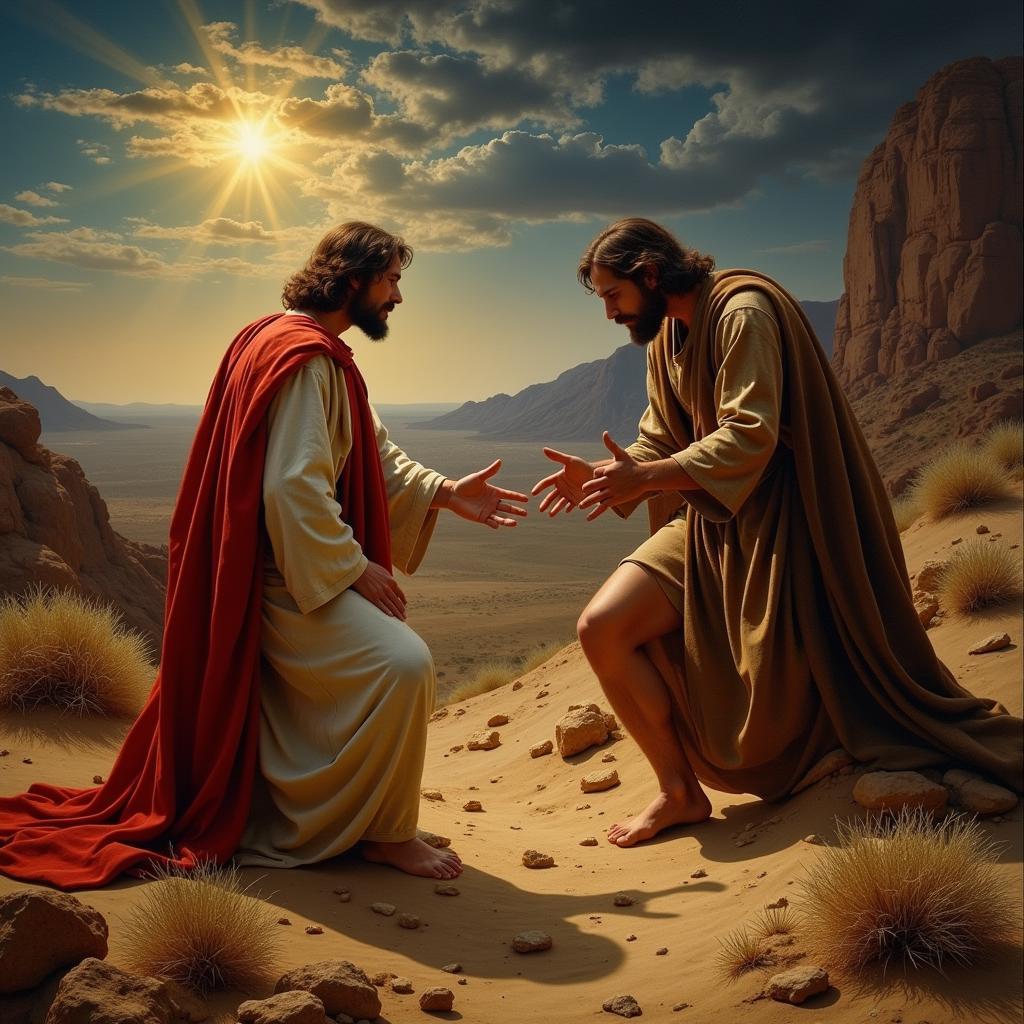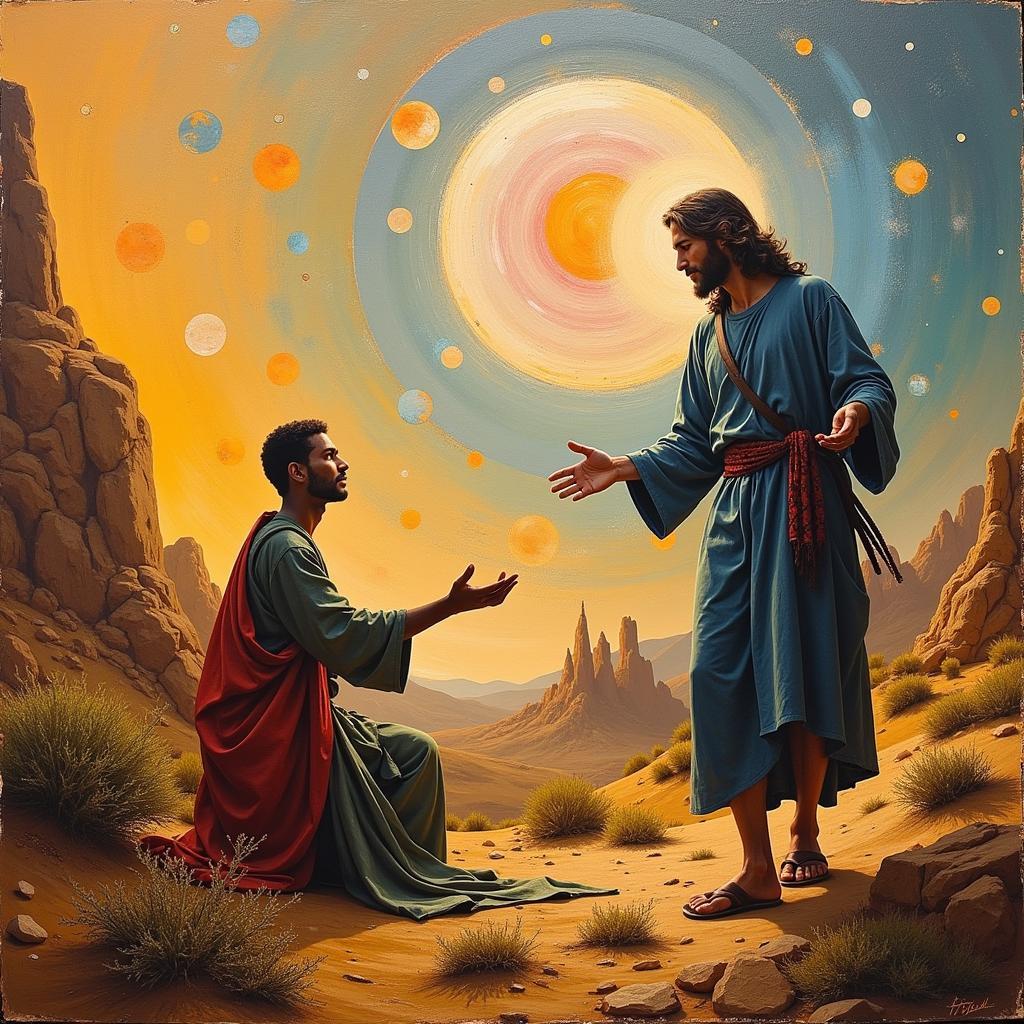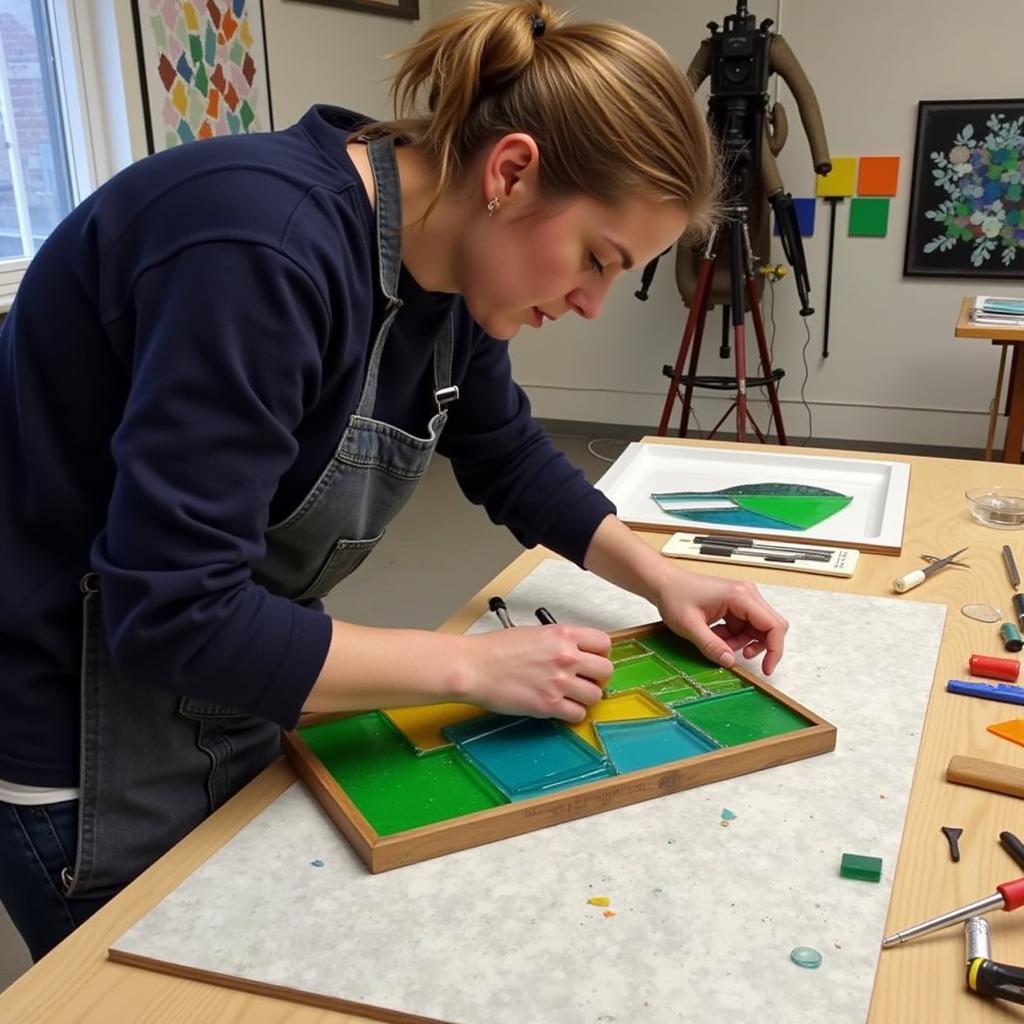Jesus in the Desert Art: Exploring Depictions of Faith and Temptation
Jesus In The Desert Art offers a powerful visual exploration of a pivotal moment in Christian theology. This period of fasting and temptation, recounted in the Gospels, has captivated artists for centuries, resulting in diverse and thought-provoking interpretations. These works delve into themes of faith, resilience, human vulnerability, and the ultimate triumph over adversity.
The Significance of Jesus’s 40 Days in the Desert
The 40 days Jesus spent in the desert hold immense symbolic weight. It represents a period of intense spiritual struggle, a time of testing and preparation before embarking on his public ministry. Artists have often used this narrative to depict not only the physical hardships of the desert but also the internal battle between good and evil. The desert itself becomes a powerful metaphor for isolation, vulnerability, and the testing ground of faith. By exploring these themes, artists invite viewers to contemplate their own spiritual journeys and the challenges they face in their lives.
The story resonates with audiences because it highlights the human aspect of Jesus. Even though he was divine, he experienced the same temptations and struggles as any human being. This relatability makes his eventual triumph over Satan all the more inspiring and meaningful.
Depicting Temptation: Artistic Interpretations of Jesus in the Desert Art
Artists across different eras and cultures have approached the depiction of temptation in unique ways. Some portray Satan as a grotesque figure, emphasizing the seductive nature of evil. Others present him as a more subtle tempter, disguised as an angel or even as an ordinary human being. This variety in artistic representation reflects the evolving understanding of temptation and the ever-present struggle against sin.
Early Christian art often focused on the symbolic representation of the desert, emphasizing the harshness of the environment and the isolation of Jesus. Later, Renaissance and Baroque artists brought a dramatic flair to their depictions, often incorporating vivid landscapes and dynamic compositions to convey the intensity of the spiritual conflict.
 Renaissance Painting of Jesus Tempted in the Desert
Renaissance Painting of Jesus Tempted in the Desert
Modern and contemporary artists continue to explore the theme, often using abstract or symbolic imagery to convey the psychological and emotional dimensions of temptation. They may focus on the internal struggle within Jesus, exploring the themes of doubt, fear, and the ultimate affirmation of faith.
The Power of Symbolism in Jesus in the Desert Art
Symbolism plays a crucial role in understanding the artistic representations of Jesus in the desert. The desert itself, as mentioned earlier, is a potent symbol of isolation and testing. Other common symbols include the serpent, which represents temptation and evil, and the angels, who minister to Jesus and offer comfort.
Bread, often used to represent physical sustenance, takes on a deeper meaning in the context of the desert. Satan’s offer of bread symbolizes the temptation to prioritize material needs over spiritual growth. Jesus’s refusal highlights the importance of faith and trust in God’s provision.
 Modern Art: Symbolic Interpretation of Jesus in the Desert
Modern Art: Symbolic Interpretation of Jesus in the Desert
Rocks and stones, symbolic of hardship and endurance, also feature prominently in many depictions. They represent the physical challenges Jesus faced and his unwavering resolve to overcome them. These symbolic elements enrich the narrative and invite viewers to delve deeper into the spiritual significance of the story.
FAQ about Jesus in the Desert Art
Q: Why is the number 40 significant?
A: The number 40 appears throughout the Bible and often signifies a period of testing or transformation.
Q: What are the three temptations of Jesus in the desert?
A: The temptations were to turn stones into bread, to throw himself down from the temple, and to worship Satan in exchange for worldly power.
Q: How has the depiction of Jesus in the desert changed over time?
A: Artistic interpretations have evolved from symbolic representations in early Christian art to more dramatic and emotional portrayals in later periods. Modern art often explores the psychological dimensions of the story.
Q: What is the key message conveyed by Jesus in the desert art?
A: The key message is the importance of faith, resilience, and the triumph of good over evil.
Q: Where can I see famous examples of this art?
A: Many museums and galleries around the world house renowned works depicting Jesus in the desert.
Jesus in the Desert: Exploring Our Own Spiritual Journeys
The story of Jesus in the desert continues to resonate with audiences today. It reminds us that we all face temptations and challenges in our lives. By contemplating the artistic interpretations of this powerful narrative, we can gain a deeper understanding of our own spiritual journeys and find inspiration in Jesus’s example of faith and resilience. Jesus in the desert art encourages us to confront our own inner demons and to choose the path of righteousness, even in the face of adversity.
 Contemporary Sculpture: Jesus in the Desert
Contemporary Sculpture: Jesus in the Desert
For support, please contact us at Phone Number: 02462573573, Email: [email protected] or visit us at Savico Megamall, 7-9 Đ. Nguyễn Văn Linh, Gia Thụy, Long Biên, Hà Nội 10000, Việt Nam. We have a 24/7 customer support team.



